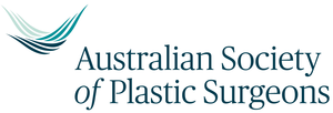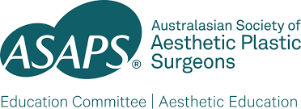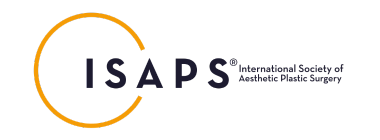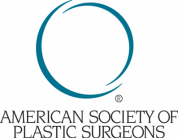Rhinoplasty Melbourne
Rhinoplasty, commonly known as a nose job, is a surgical procedure that can alter the shape and size of your nose. This procedure can be done for cosmetic or functional reasons to improve breathing difficulties.
Rhinoplasty
Looking for an experienced plastic surgeon specialising in Rhinoplasty in Melbourne? Dr Rodrigo Teixeira is a specialist plastic surgeon with a focus on rhinoplasty results that respect your identity and ethnicity.
Rhinoplasty is a popular surgical procedure for both the functional and aesthetic aspects of the nose. Patients often report improved breathing after a successful rhinoplasty.
At Dr Rodrigo’s practice, each rhinoplasty surgery is tailored to the individual patient’s anatomy, breathing concerns, and personal goals. Before considering this type of surgery, it’s important to address key criteria to ensure the best possible outcome. Keep in mind that rhinoplasty may not be suitable for everyone.
Contact Dr Rodrigo Teixeira’s office today to schedule a consultation and learn more about rhinoplasty in Melbourne.
Are You Considering A Rhinoplasty?
Rhinoplasty is a surgical procedure that can reshape the nose, making it more proportionate to the face while also improving breathing. At our practice, we believe in a balanced approach between aesthetics and function to ensure optimal results for every patient.
A crooked nose, whether from growth or injury, is a common reason patients seek Rhinoplasty. Additionally, more than 50% of men and women seeking a nose job also have some degree of obstructed breathing. This can be caused by a deviated septum or enlarged internal tissues such as turbinates. In some cases, other internal factors may also contribute to breathing difficulties, which must be addressed before surgery.
Did you know that the external valves of your nose play a critical role in the flow of air? The nostrils are the entry point for air into the airway, and weakening of the lower lateral cartilages can cause nostril collapse during breathing, leading to reduced airflow. Previous nasal surgery can also be a contributing factor to this issue.
Internal valves in the nose can also contribute to breathing difficulties? The upper lateral cartilages, located just past the nostrils, can be a common point of obstruction. To determine if this is the case, a Cottle’s test can be performed. During this test, the surgeon pulls the cheek sideways to determine if there is a marked improvement in breathing.
The nasal septum is the wall that divides the nasal cavity in half, and when it becomes deviated, it can make breathing through the nose difficult. Symptoms of nasal obstruction caused by a deviated nasal septum include difficulty breathing through the nose, snoring, and recurrent sinus infections. Fortunately, a deviated nasal septum can be corrected with surgery. Septoplasty is a common procedure that involves straightening the nasal septum to improve nasal airflow.
Did you know that an enlarged nasal turbinate can cause difficulty breathing? The nasal turbinate plays an important role in filtering, humidifying, and warming up the air that we breathe through our nose. However, when the turbinate becomes enlarged, it can obstruct the nasal passage and lead to symptoms such as congestion, difficulty breathing, and snoring. This condition is known as turbinate hypertrophy, and it can be caused by a variety of factors such as allergies, infections, and environmental irritants. Treatment options for turbinate hypertrophy may include medications to reduce inflammation or surgery to remove a portion of the turbinate tissue.
Cosmetic Rhinoplasty
Are you considering cosmetic rhinoplasty? It’s important to understand that every nose is unique and requires a thoughtful and individualised approach. A skilled plastic surgeon will take into consideration your facial features and heritage to create the best result
Before you start looking for a plastic surgeon for your rhinoplasty procedure, it’s important to have a clear understanding of your goals and expectations. People choose cosmetic rhinoplasty for a variety of reasons, including wanting to correct a specific feature. By understanding your motivations and expectations, you can work with your surgeon to develop a treatment plan that will help you achieve your desired results.
Cosmetic rhinoplasty is a surgical procedure that addresses a variety of common concerns related to the appearance of the nose. Whether the nose is disproportionately large or small for the face, has a prominent bump or hump on the bridge, or appears too flat, a skilled surgeon will take into account the patient’s unique facial characteristics.
Additionally, cosmetic rhinoplasty can address concerns such as a droopy or upturned nasal tip, asymmetry or deviation, and wide nostrils. Patients with a deviated nasal septum causing blockage can also benefit from rhinoplasty. By working with a skilled and experienced plastic surgeon, patients can achieve the best results.
Rhinoplasty, nose surgery or nose job
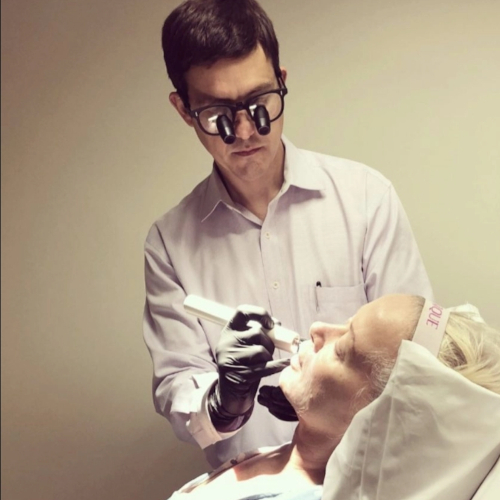
Rhinoplasty (also called ‘nose job’) may be performed for cosmetic reasons to change the appearance and proportion of the nose and it involves a fine balance between reshaping the nose and maintaining or improving its function.
Cosmetic rhinoplasty may address the following concerns:
• nose that is disproportionately large or small for the face
• nose profile with visible humps or depressions on the bridge
• the position of the nasal tip and the angle between the nose and the upper lip
• nose width at the bridge or in the size and position of the nostrils
• nasal tip that is enlarged or bulbous, drooping, upturned or hooked
• nostrils that are large, wide, or upturned
• nasal asymmetry
• crooked nose due to injury or trauma
• when the internal structure separating the nasal cavities is crooked (deviated septum)
There are many possibilities and before you start looking for a doctor for cosmetic surgery, think about what you expect for your treatment. People choose to have rhinoplasty for all sorts of reasons and understanding why you want cosmetic surgery and what you expect from it will be very important to your overall satisfaction.
When deciding if rhinoplasty surgery is for you, ask your surgeon to make an informed decision. Developing good rapport with your surgeon is very important. Your consultation is an opportunity to discuss possible results and find out if they match your expectations.

Sorry, we couldn't find any posts. Please try a different search.
Rhinoplasty results
before and after photos
- Any surgical or invasive procedure carries risks. Before proceeding, you have the option to seek a second opinion from an appropriately specialist surgeon
- Recovery time and treatment results will vary from patient to patient and depend upon a variety of individual patient factors
Ask to see before and after photos and have a better idea of results. Photos and simulation should not be used to predict the final result. Instead, they facilitate communication between you and your surgeon when talking about your concerns and your goals.
Surgical techniques in rhinoplasty
If you are considering rhinoplasty, you may not be aware that there are different surgical techniques available. Each technique has its own advantages, limitations, and risks, so it is crucial to choose a qualified surgeon who can determine which technique is best suited to your individual needs.
During the initial consultation, Dr Rodrigo will carefully evaluate your nose to identify any concerns or limitations, and adjust your expectations accordingly. His approach to rhinoplasty, uses a combination of tissue preservation and structural rhinoplasty techniques to achieve the desired results. This involves careful planning of the procedure and the selective use of cartilage grafts to achieve the desired aesthetic outcome.
Preservation rhinoplasty is a surgical technique that involves making subtle changes to the nose’s appearance while preserving its natural structure and function. It is ideal for patients looking to address minor aesthetic concerns without altering the overall shape of their nose. During the procedure, the surgeon carefully reshapes the nasal tissues and cartilage while leaving as much of the natural anatomy intact as possible. This technique also corrects functional issues such as breathing difficulties or a deviated septum. The benefits of preservation rhinoplasty include a more natural-looking outcome, less post-operative discomfort, and a shorter recovery time. Therefore, it may be the right choice for those looking to maintain the natural appearance and function of their nose.
Structural rhinoplasty is a surgery that modifies the nose’s underlying structure to achieve desired aesthetic or functional outcomes. The technique is ideal for patients who require significant changes to the size or shape of their nose due to asymmetry or trauma. During the procedure, the surgeon may use cartilage grafts to reshape the nasal framework or correct functional issues like breathing difficulties or a deviated septum. The benefits of structural rhinoplasty include long-lasting results, improved function, and the ability to address more complex issues. However, the technique entails a more extended recovery time and may cause more post-operative discomfort.
Nasal filler is a non-surgical treatment option that involves injecting fillers into a patient’s nose to reshape it and improve its contour. Typically, hyaluronic acid (HA), the same type of filler commonly used in cheek and lip fillers, is used for this procedure. Unlike traditional rhinoplasty, this technique is nonsurgical and has a shorter recovery time. However, the risk profile of this procedure is high, and not all doctors offer it. Dr Rodrigo does not provide liquid rhinoplasty treatment due to this reason but may use nose filler for minor and localized problems.
Augmentation Rhinoplasty
Augmentation rhinoplasty is a popular procedure performed to change the height and projection of the nose, particularly for individuals with low, flat, and wide noses, which is more common in Asian and African ethnicities. This procedure involves the use of implants or autologous tissues to augment the nasal dorsum and the nasal tip, as well as reshaping the nasal tip for a refined appearance.
Nasal implants vs Rib Cartilage Grafts
Implants such as silicone or porous polyethylene implants are commonly used for augmentation rhinoplasty, but there is a risk of infection and implant rejection. To minimise this risk, autologous tissue reconstruction using one’s own cartilage or cadaveric rib cartilage grafts is a superior option in terms of biocompatibility and longevity of the procedure. The use of autologous rib cartilage, in particular, is gaining popularity as it provides more natural-looking results and a lower risk of infection and rejection.
Hybrid augmentation rhinoplasty
Hybrid augmentation rhinoplasty, which combines both implant and autologous tissue techniques, has also emerged as a popular option for patients who require a more significant augmentation. This technique allows for a more customised approach to the procedure, with the implant used to provide the initial augmentation, and the autologous tissue used to fine-tune the shape and appearance of the nose.
S-line rhinoplasty
S-line rhinoplasty is another emerging trend in augmentation rhinoplasty. This procedure focuses on creating an S-shaped profile of the nose, giving it a more refined appearance. This technique involves both augmentation of the nasal dorsum and reshaping of the nasal tip to create the desired S-shape.
In conclusion, augmentation rhinoplasty is a popular procedure for individuals who desire a more prominent and refined nose. The use of autologous tissue reconstruction is a superior option due to its biocompatibility and longevity. Hybrid augmentation rhinoplasty and S-line rhinoplasty are emerging trends in the field and offer patients more customized and refined results.
Revision Rhinoplasty
Revision rhinoplasty, also known as secondary rhinoplasty, is a surgical procedure that aims to improve or correct the results of a previous rhinoplasty. This procedure can be carried out for both aesthetic and functional reasons, such as difficulty breathing.
Minor touch-ups may only require small adjustments, such as correcting a minor bump or asymmetry. However, major redo surgery may be necessary to correct more significant issues, such as over-resection of cartilage or bone.
It’s important to communicate clearly with your surgeon about your concerns and desired outcome, as revision rhinoplasty can be more challenging than the initial surgery. It’s also recommended to seek a second opinion for reassurance and to ensure the best possible outcome.
While revision rhinoplasty can be a more complex procedure, it can provide improved results and satisfaction for patients who were not fully satisfied with the outcome of their initial rhinoplasty.
Rhinoplasty Frequently Asked Questions
When considering rhinoplasty, it is important to take into account the associated costs. The cost of the procedure can vary widely depending on factors such as the type of rhinoplasty being performed, the surgeon’s experience, and the facilities where the surgery is taking place. For privately insured patients that are eligible for a rebate, rhinoplasty can start from $12,000, while uninsured and cosmetic rhinoplasty typically starts from $18,000. It is important to consult with a qualified surgeon to discuss the specifics of your individual case and to obtain an accurate cost estimate.
If you’re considering rhinoplasty, it’s important to know whether it is covered by Medicare or private health insurance. Cosmetic rhinoplasty procedures are typically not covered by private health insurance and are not eligible for Medicare rebates. However, if there is a functional or medical component, such as a problem with breathing or a congenital deformity, then that portion of the procedure may be covered by insurance or eligible for a Medicare rebate. Eligibility for a medical rebate can be determined by using the NOSE scale assessment tool, which includes questions about nasal congestion, blockage, and breathing difficulties during sleep and exercise. It’s important to discuss your individual situation with your surgeon and insurance provider to determine coverage and costs.
Revision rhinoplasty is a surgical procedure aimed at correcting unsatisfactory outcomes of previous nose jobs. The cost of revision rhinoplasty varies depending on the extent of the procedure and the surgeon’s experience. In some cases, the original surgeon may offer revision surgery at a lower rate or no cost as part of their revision surgery policy. However, if you seek a new surgeon, the cost will likely be billed as a new case. It is important to communicate your concerns clearly to your surgeon to determine the complexity of the treatment required and the associated cost.
Rhinoplasty is generally not a painful procedure, and most patients report feeling only mild discomfort or tenderness in the nose and surrounding areas. The use of internal stents or nasal packing may cause pressure, and there may be some swelling in the nose, cheek, and eyelids after the surgery. However, these discomforts usually subside within a few days. Pain management techniques, such as over-the-counter pain medication, can be used to alleviate any discomfort.
There is no ideal age for rhinoplasty as every patient’s needs and concerns are different. In general, it is recommended to wait until a person has reached their full facial growth, typically around age 17-18 for women and age 18-19 for men, before considering rhinoplasty. However, age is not the only factor to consider as individual factors such as physical maturity, emotional maturity, and overall health must also be taken into account. A consultation with a qualified plastic surgeon can help determine if a person is a good candidate for rhinoplasty and if it is the right time for them to undergo the procedure.
Things to consider before Rhinoplasty surgery
Before undergoing rhinoplasty, it’s important to carefully consider your motivations and expectations for the surgery. It’s important to approach the process with realistic expectations.
Think about why you want to have rhinoplasty and what specific changes you hope to achieve. Can you clearly explain your concerns and goals to your surgeon? Being able to communicate your desires effectively is key to ensuring that you’re satisfied with the results of your surgery.
It’s also important to choose a qualified and experienced surgeon, who can help you understand the potential risks and benefits of the procedure.
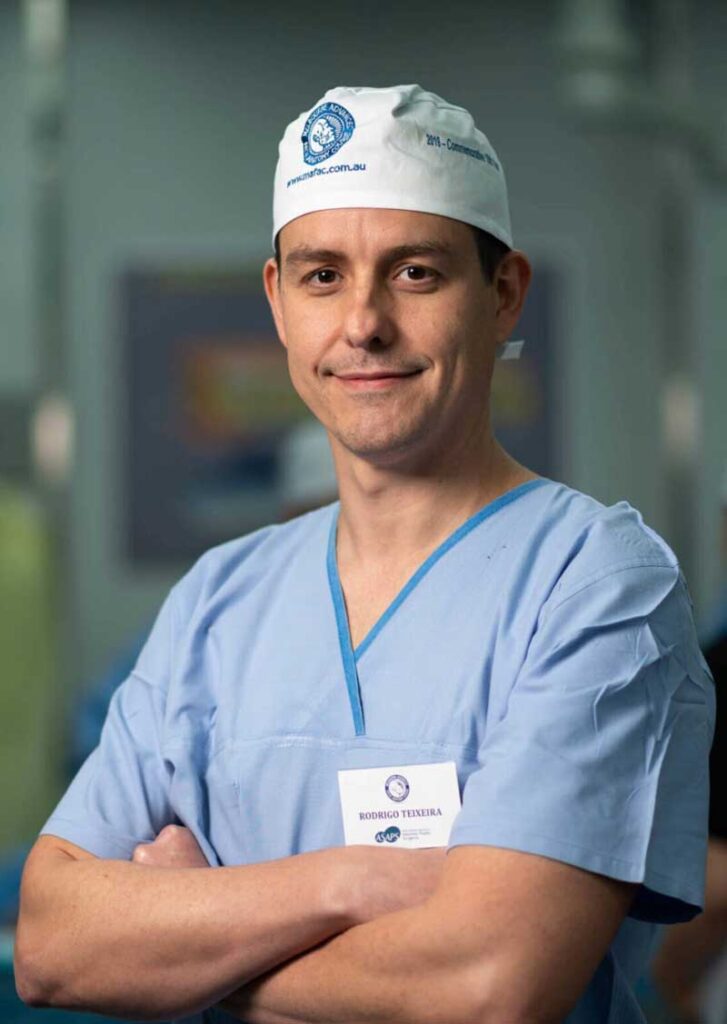
Possible risks with Rhinoplasty
Despite the highest standards of surgical practice, complications are possible with rhinoplasty surgery. While it is a personal decision to undergo the procedure, patients should be aware of the potential risks before making a final decision.
Specific risks associated with rhinoplasty include nasal obstruction, difficulty breathing, changes in the sense of smell or taste, persistent pain or discomfort, swelling, bruising, and bleeding. In rare cases, infection, blood clots, or adverse reactions to anaesthesia may occur. Asymmetry, contour irregularities, under-correction, or over-correction of the nose may also occur, requiring revision surgery.
Additionally, small incisions are used to minimise visible scars, but some patients may be prone to developing more scar tissue. Scar tissue can also form under the skin and make the nose appear full. Prolonged swelling and internal scarring may need additional treatments.
It is important to choose a qualified and experienced surgeon to minimise the risks associated with rhinoplasty. Patient safety and satisfaction are taken seriously by Dr Rodrigo and his team, who are committed to providing excellent care and achieving great results. If you have any questions about rhinoplasty or are considering the procedure, do not hesitate to reach out and book an appointment.
Rhinoplasty Recovery
After rhinoplasty surgery, patients are typically discharged on the same day or may require an overnight stay for observation. Before the procedure, it’s important to arrange for transportation and assistance to get home. Dr. Rodrigo strongly advises having a responsible adult accompany you for up to two days as you recover.
Your nose may have soft silicone stents placed inside your nostrils, and the outside of your nose will be secured with a splint and tape. Some stitches may need removal in the first few days, and the stents and splint will most likely be removed after one week. To minimise swelling and bruising, it’s important to apply ice packs around the nose and cheeks and keep your head slightly elevated during bed rest.
Choosing an accredited and affiliated Specialist Plastic Surgeon like Dr. Rodrigo ensures that you receive a high level of care throughout your procedure and recovery. His team will provide you with detailed post-operative instructions, manage your pain, perform dressing changes, and schedule follow-up appointments until you are fully recovered. Don’t hesitate to reach out to Dr. Rodrigo and his team if you have any concerns or questions during your recovery period.
Find Your specialist Rhinoplasty surgeon
If you’re considering rhinoplasty surgery, it’s essential to find the right surgeon to ensure the best possible outcome. Here are some tips for finding a qualified and experienced surgeon:
Research credentials: Look for a surgeon who is a fellow of the Royal Australasian College of Surgeons and has extensive experience performing rhinoplasty surgery.
Schedule a consultation: Meet with potential surgeons in person to discuss your goals and concerns and get a sense of the surgeon’s approach to rhinoplasty. Dr Rodrigo offers personalised consultations to discuss each patient’s unique goals and expectations.
Ask questions: Don’t hesitate to ask questions about the surgeon’s experience, training, and approach to rhinoplasty surgery. Your surgeon should be able to provide answers to help you make an informed decision about your surgery.
Look for personalised care: A good surgeon will take the time to understand your unique needs and goals and work with you to develop a personalised treatment plan. Dr Rodrigo and his team are committed to providing personalised care and support to each patient, from the initial consultation through the recovery process.
By following these tips and working with a skilled and experienced specialist rhinoplasty surgeon like Dr Rodrigo Teixeira, you can achieve the best possible results.
Find your specialist Rhinoplasty surgeon
If you’re considering rhinoplasty surgery, it’s essential to find the right surgeon to ensure the best possible outcome. Here are some tips for finding a qualified and experienced surgeon:
Research credentials: Look for a surgeon who is a fellow of the Royal Australasian College of Surgeons and has extensive experience performing rhinoplasty surgery.
Schedule a consultation: Meet with potential surgeons in person to discuss your goals and concerns and get a sense of the surgeon’s approach to rhinoplasty. Dr Rodrigo offers personalised consultations to discuss each patient’s unique goals and expectations.
Ask questions: Don’t hesitate to ask questions about the surgeon’s experience, training, and approach to rhinoplasty surgery. Your surgeon should be able to provide answers to help you make an informed decision about your surgery.
Look for personalised care: A good surgeon will take the time to understand your unique needs and goals and work with you to develop a personalised treatment plan. Dr Rodrigo and his team are committed to providing personalised care and support to each patient, from the initial consultation through the recovery process.
By following these tips and working with a skilled and experienced specialist rhinoplasty surgeon like Dr Rodrigo Teixeira, you can achieve the best possible results.
Need more information?
Rhinoplasty Plastic Surgery Blog
Most Common Problems After Rhinoplasty
The nose is a prominent feature on a person’s face and an important element that adds to an individual’s aesthetics. Concerns with the size …
